Learn how to make blue “crystal meth” rock candy inspired by Breaking Bad. It’s easier than you think, and the results look AND taste delicious. Perfect for costume and viewing parties!
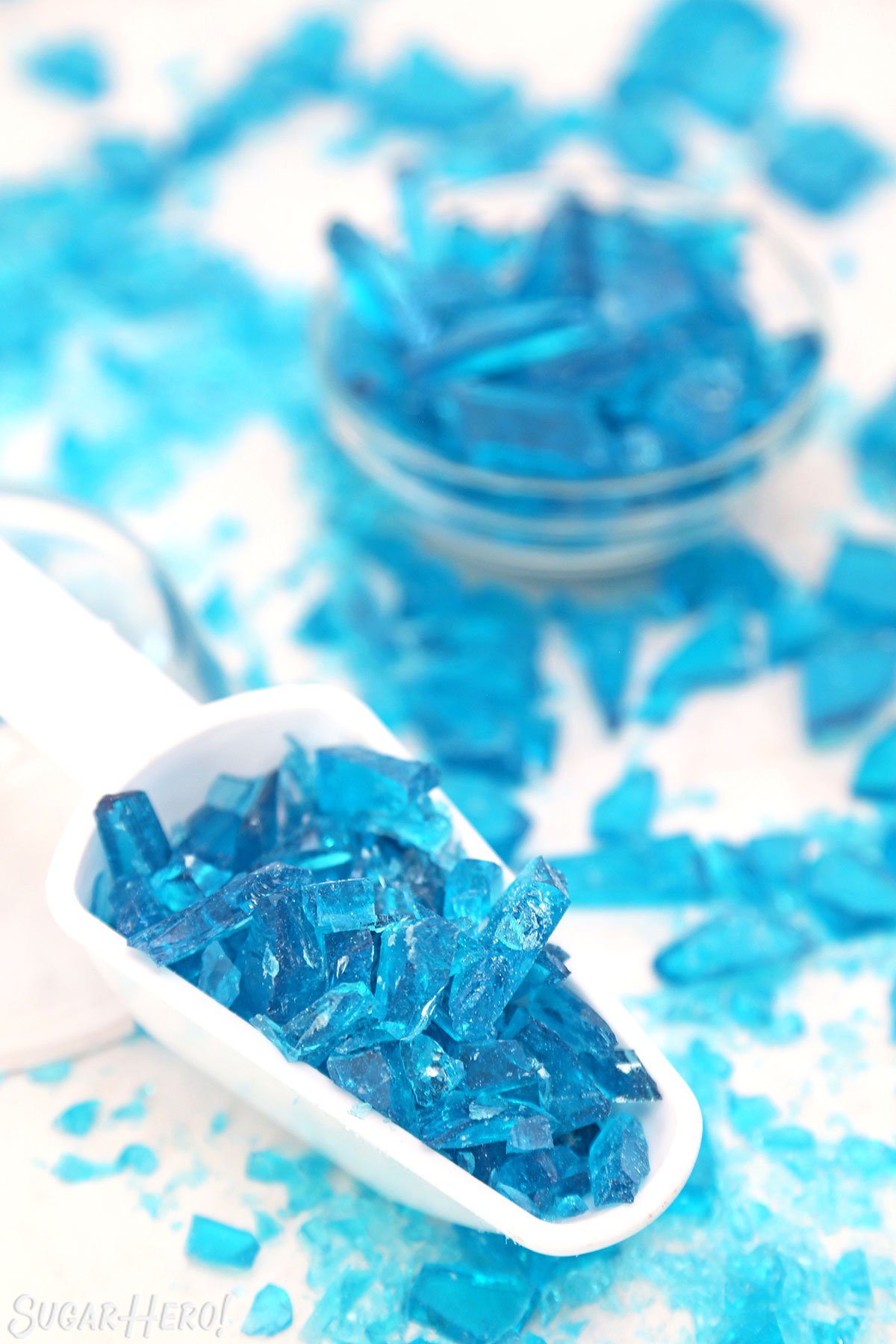
💙 How to make blue rock candy
This rock candy recipe is inspired by the television show Breaking Bad. As any viewer knows, the plot revolves around the blue-tinged crystal meth created by chemistry teacher Walter White and his student-turned-partner Jesse Pinkman. The meth is so pure, so potent, that it changes the entire southwestern drug trade and, eventually, the very lives of its creators.
As a fan of both sugar and television, imagine my delight when I found out that the “meth” used in the show is actually rock candy. Too perfect! So way back in 2012, at the height of Breaking Bad mania, I decided to create my own rock candy recipe, modeled after the Breaking Bad drug, for a viewing party with friends. Since it was first posted a decade ago, hundreds of people have made it for parties and Halloween costumes. Here is just a small sampling of the readers who have made it, loved it, and sent in pictures:
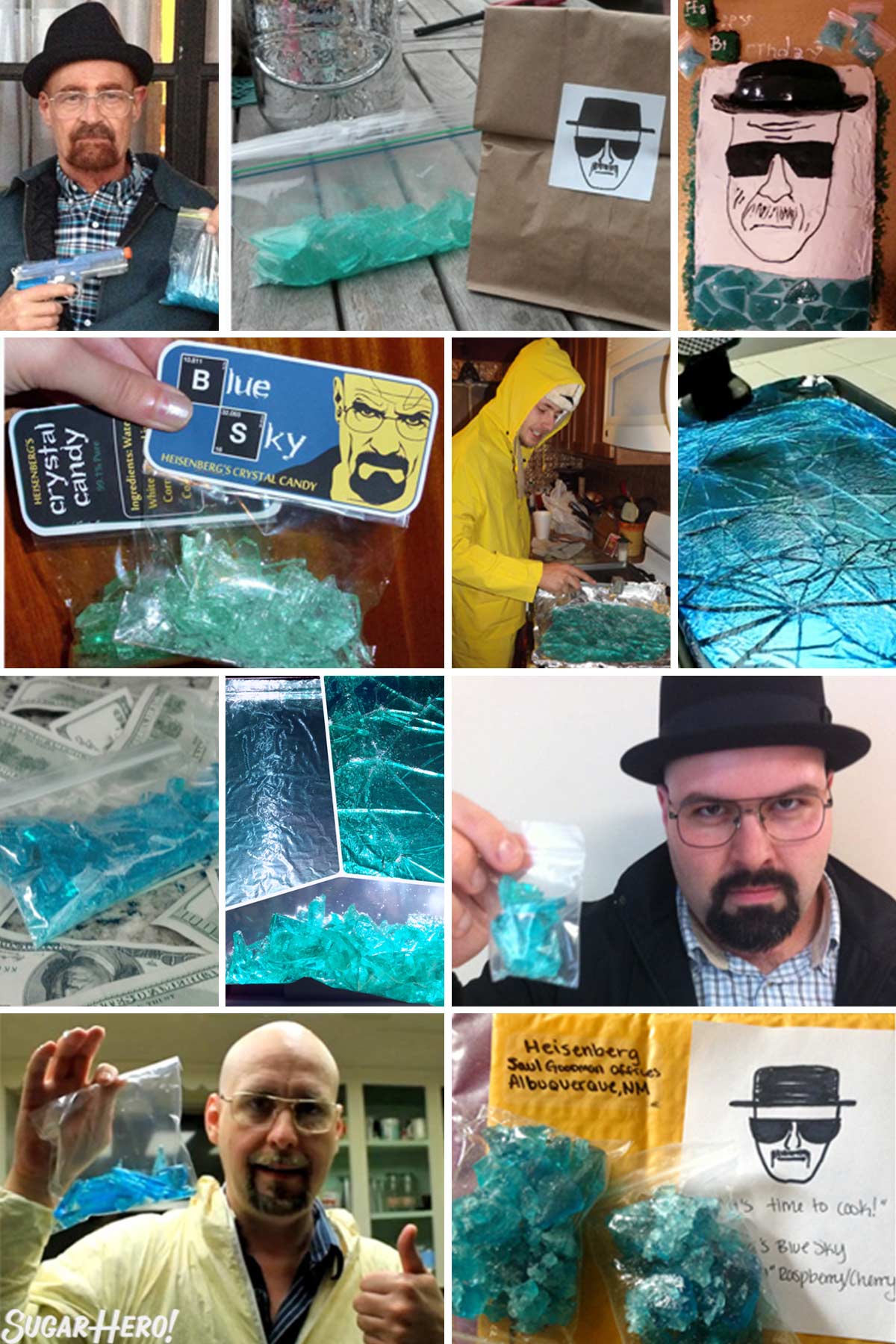
Although Breaking Bad is now off the air, this recipe remains a popular one, so it seemed overdue for an update. I’ve revised the post and recipe to make it more thorough, detailed, and helpful for YOU, my budding little Heisenbergs!
How to rock your candy-making
Rock candy is not difficult to make, and even beginning candy makers can do it successfully on their first try. Here are a few things you can do to ensure success:
- Read the recipe before beginning. This might sound obvious, but you’d be surprised! Once the candy hits a certain temperature things move very fast, and you want to be prepared to act right away, not be stuck reading the next step.
- Use a candy thermometer. More on this below, but it is the #1 tool that will guarantee you success.
- Read the Tips & Troubleshooting sections right before the recipe. Overwhelmingly, when people have trouble with this recipe, it is caused by a few very common mistakes, and knowing what these are in advance will help you avoid them.
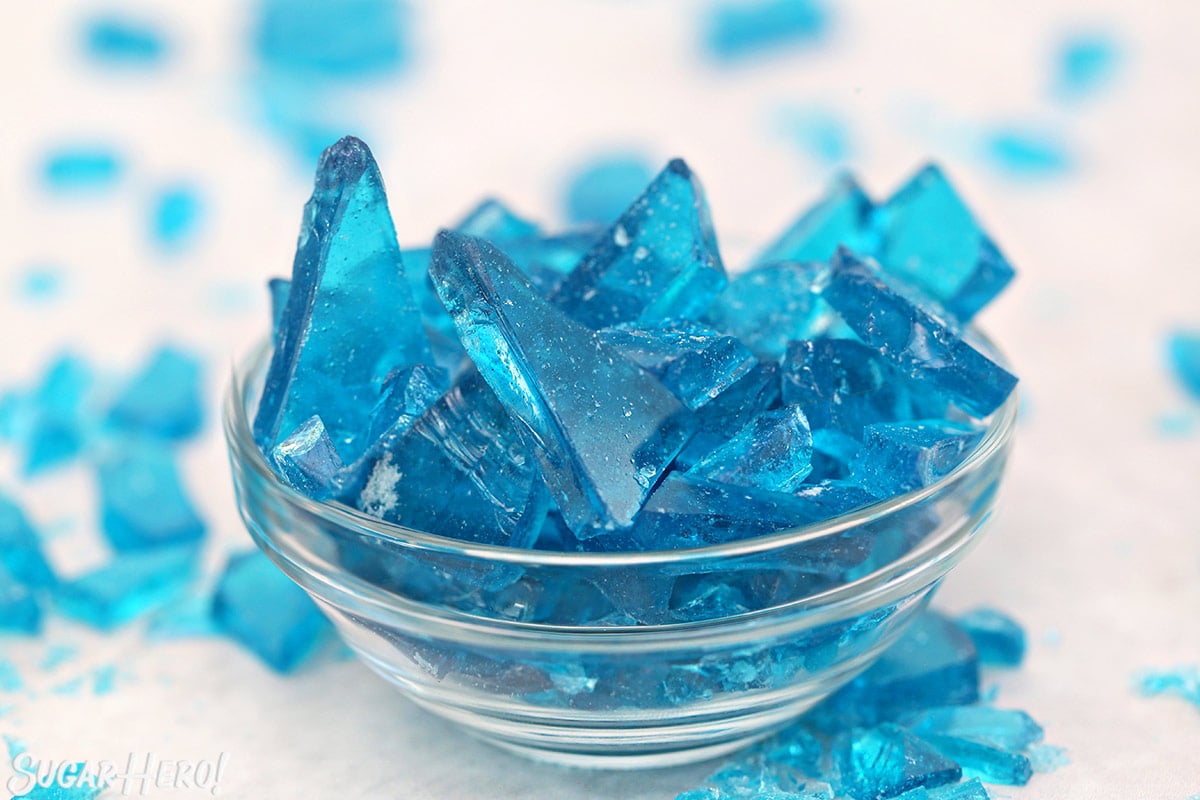
Table of Contents
🧾 What You’ll Need
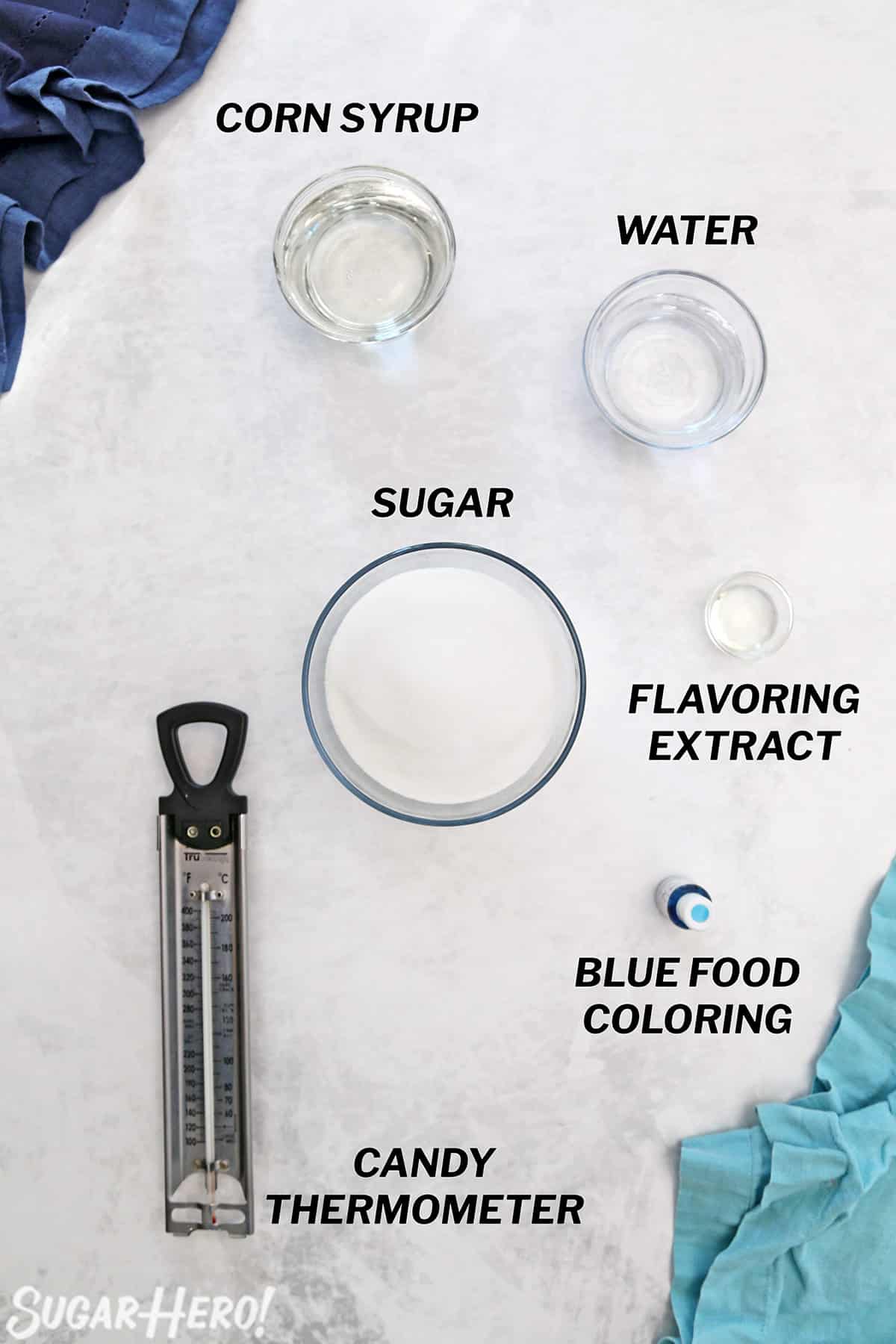
Ingredients & Equipment
Here’s what you need to know as you gather your candy-making supplies. (Links are affiliate links and I earn a small commission from qualifying purchases.)
- Corn syrup: Light corn syrup helps prevent the sugar from crystallizing. If you are not able to easily find it, golden syrup or glucose syrup is a good substitute. Note that golden syrup has a yellow tinge and is likely to turn your finished candy greenish-blue.
- Granulated sugar: Not all sugar is created equal. Some granulated sugar is made from cane sugar, and some comes from beets. My strong preference is to use 100% cane sugar — in my experience, this gives more reliable, consistent results. If your sugar package does not specify, chances are that it is beet sugar or a mix of both.
- Clear flavoring extract: If getting a blue color, like on the show, is important to you, you’ll want to be sure you’re using clear flavoring extract. Brown extracts like vanilla will give your candy a yellowish tinge. See the Flavoring section below for a list of clear flavoring suggestions.
- Blue gel food coloring: I always make my candy with Americolor Sky Blue gel coloring, and feel confident recommending this brand and color. Liquid food coloring (ie, the type found in most grocery stores) might not produce the color results you’re after.
- Candy thermometer Not optional! A candy thermometer is the #1 tool you will need to make perfect rock candy. You can buy an inexpensive one from the grocery store (like this model). If you will be making candy regularly, it’s worth it to invest in a nicer thermometer. I have and love the ChefAlarm, because it alerts me when I’m nearing my finished temperature. A thermometer helps you monitor the temperature of the frying oil, so you’ll have successful doughnuts every time. If you are new to using a thermometer, check out my guides for how to use a thermometer and how to test and calibrate a thermometer correctly.
📋 How to Make Rock Candy
Here’s an overview of how to make this blue rock candy, and full instructions are included in the recipe card down below.
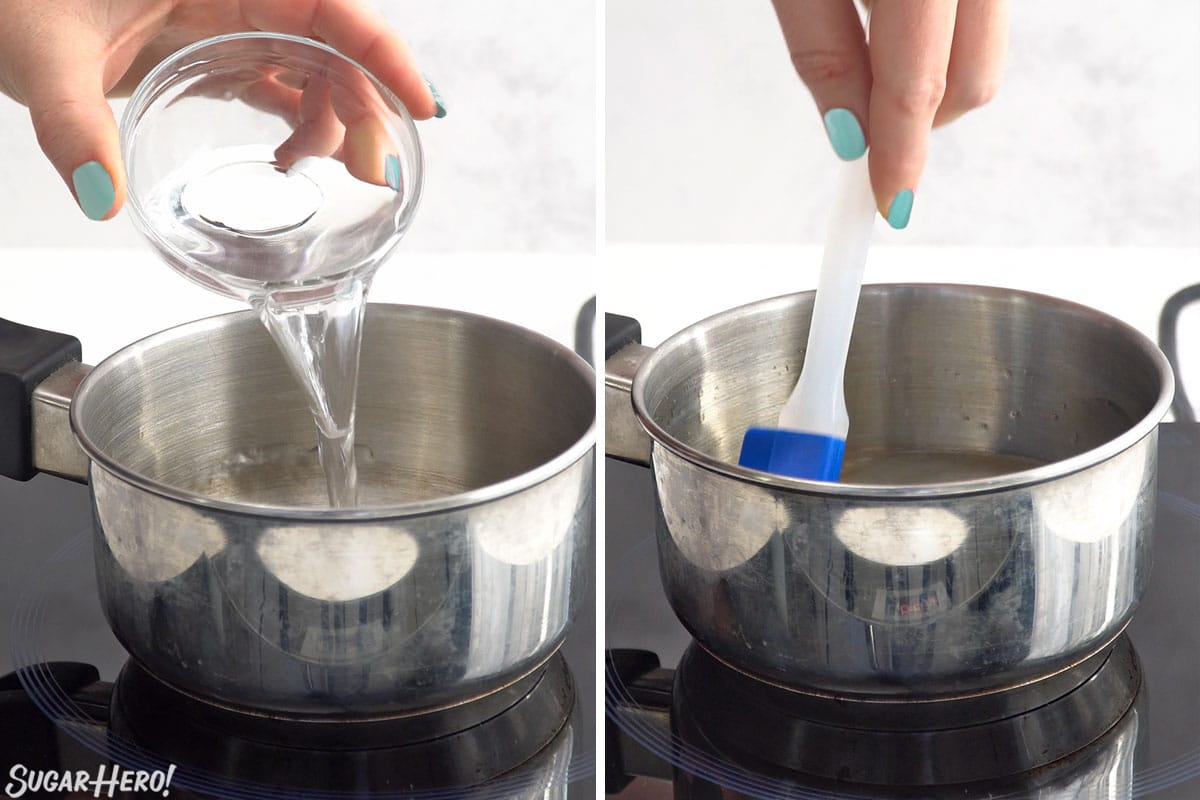
Make the sugar syrup
- Combine water, light corn syrup, and granulated sugar in a medium saucepan over medium-high heat.
- Stir until the sugar is moistened and dissolves.
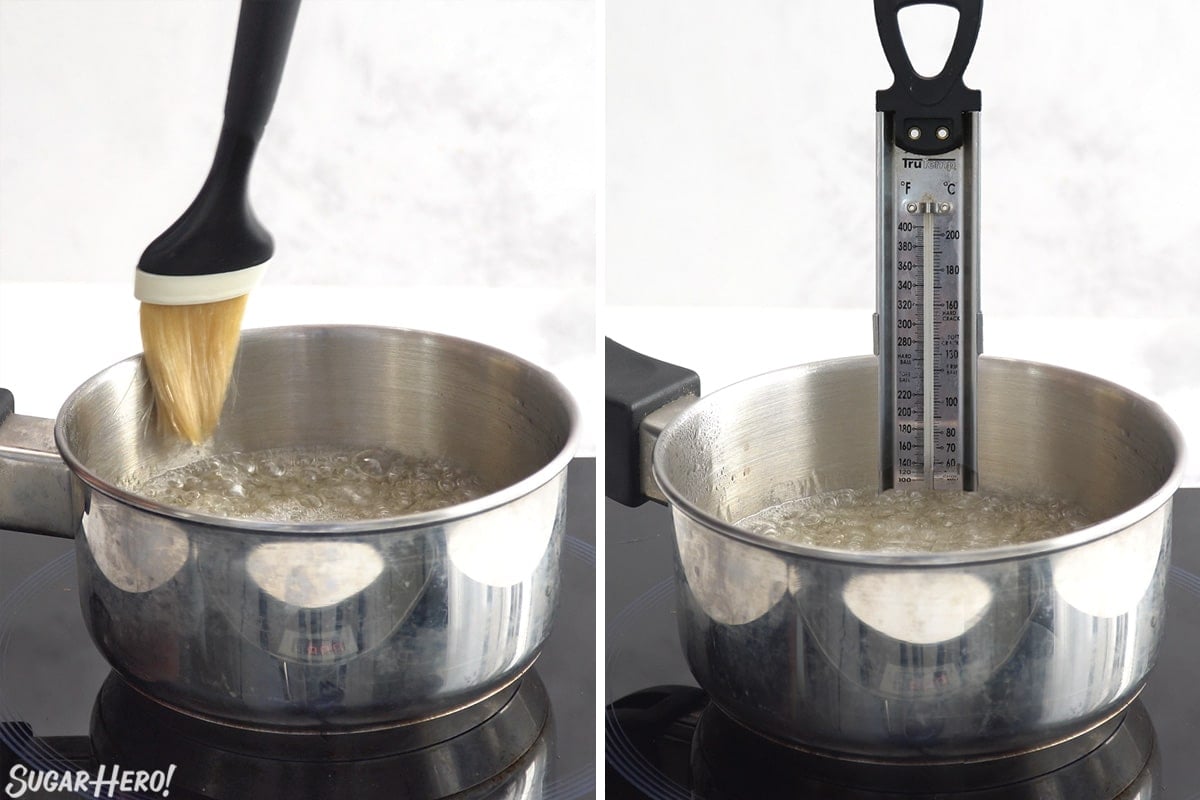
- Brush down the sides of the pan with a wet pastry brush – this will remove any stray sugar crystals. Sugar crystals in the pan can cause your whole batch to crystallize.
- Once it comes to a boil, insert a candy thermometer. From this point on, do not stir the candy.
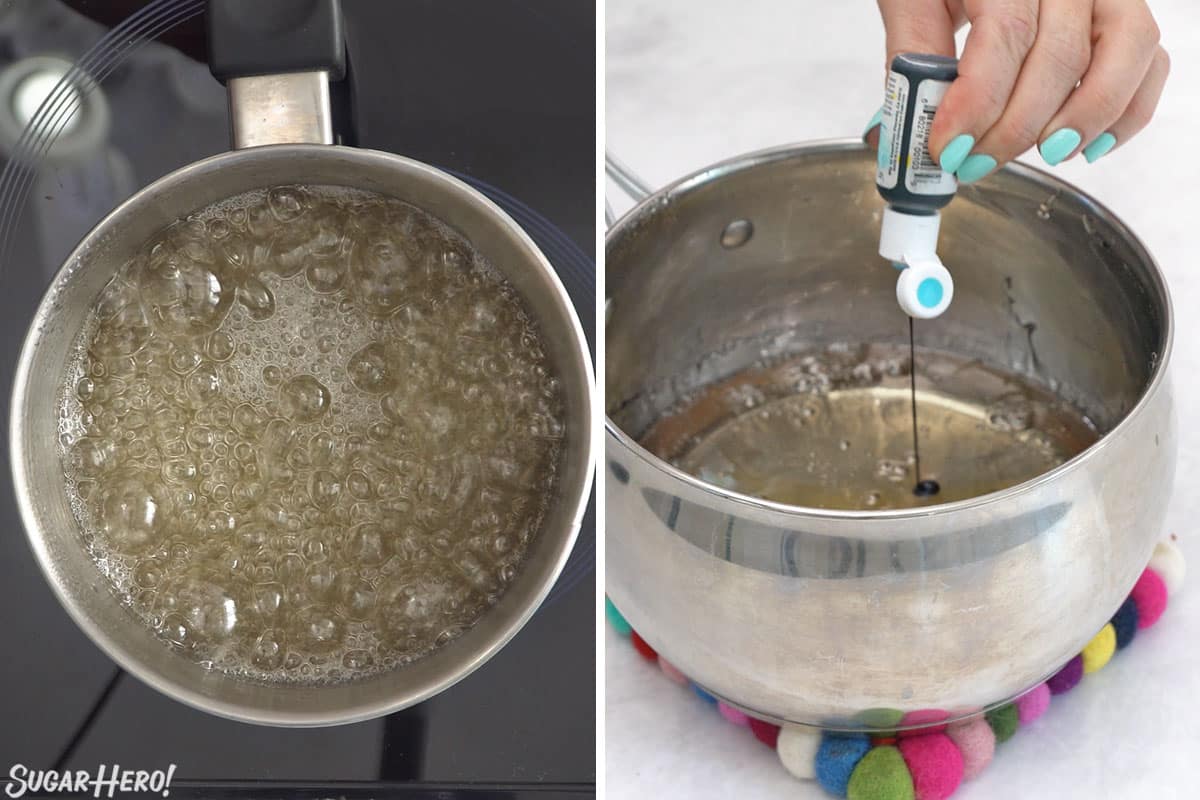
Cook and add coloring
- Cook the candy until it reaches 290 F on the thermometer. It should be a light yellowish color.
- Immediately remove the pan from the heat. Let it sit for a minute, until the rapid bubbling stops, then add flavoring extract and blue gel food coloring.
- Stir well until the color is evenly distributed.
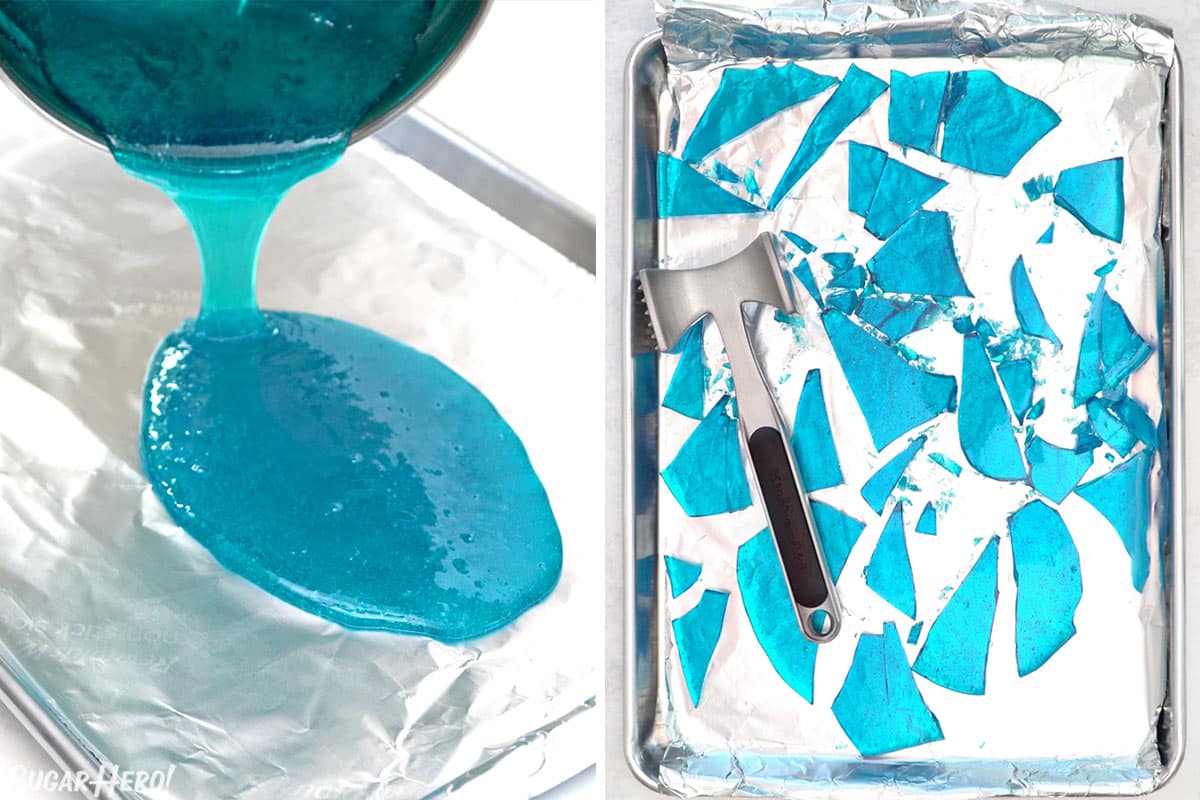
Pour and cool
- Pour the hot candy out onto a baking sheet covered with foil. You can spread it into a thinner layer with the spatula if you’d like.
- Let the candy cool completely at room temperature, until it is set and hard.
- Use a knife or kitchen mallet to smash it up into smaller pieces.
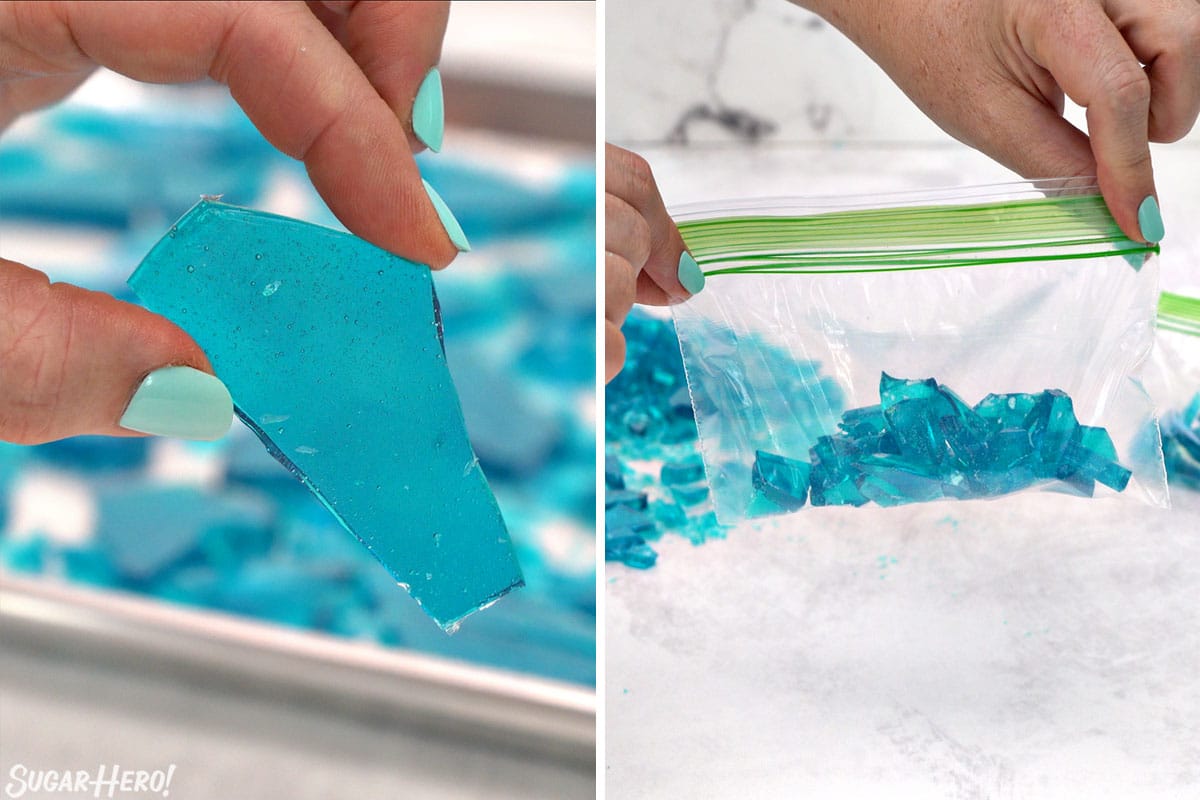
- This candy is easiest to eat in large pieces, so some people prefer to leave it in big chunks. If you want to be more accurate to the show, you can crush it up into smaller chunks.
- For optimal awesomeness, I recommend serving this in small baggies at a Breaking Bad viewing party.
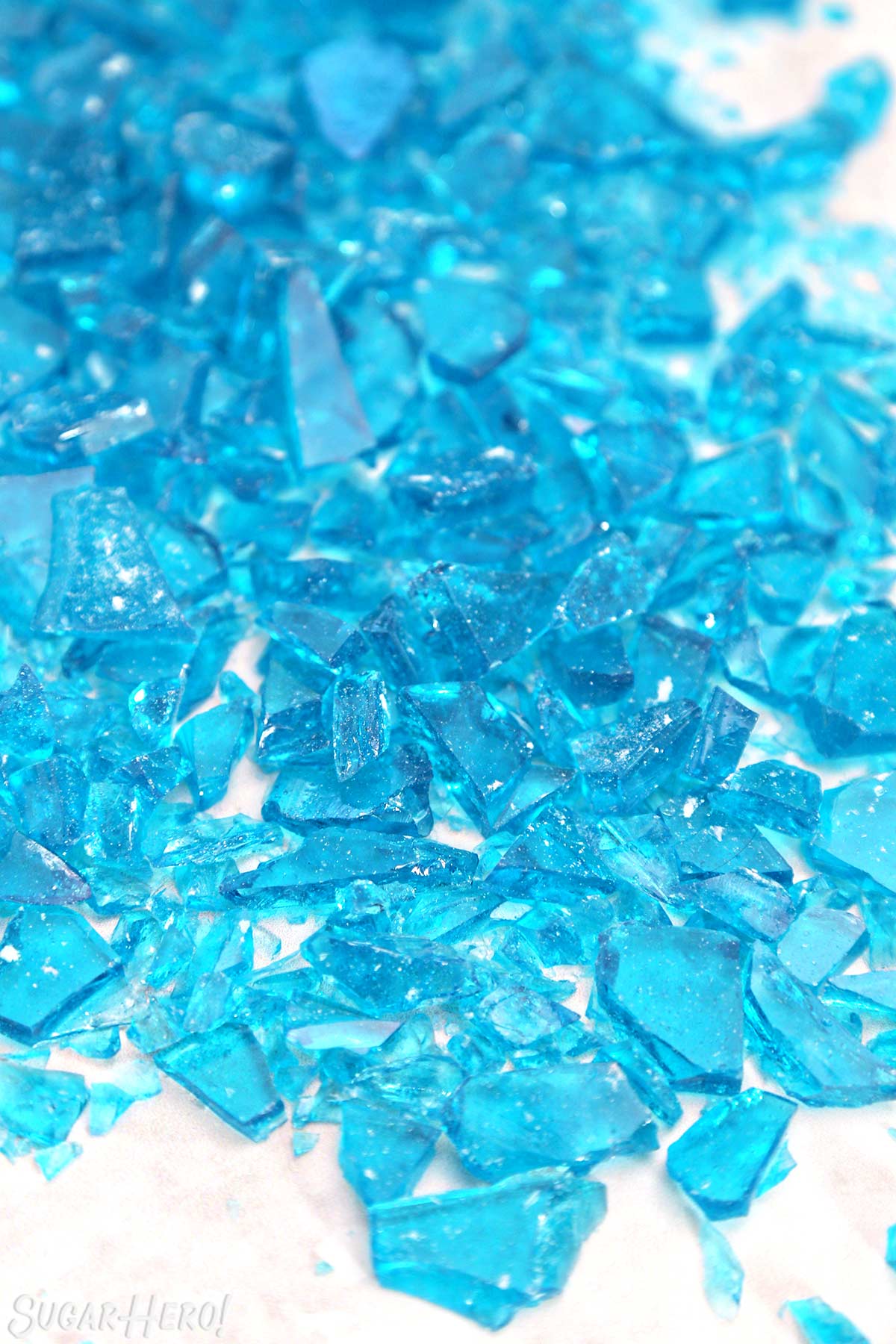
😋 Flavoring Recommendations
Clear flavoring is a must if you want your candy to stay clear and blue. You can always use clear vanilla, which is often available at cake and candy supply stores, and some larger grocery stores. It is imitation vanilla, so the flavor isn’t as great as real vanilla extract, but if you want vanilla candy, it’s your best bet.
My personal favorite is fruit flavors, since it seems like such a natural choice for hard candy. Here’s a partial list of clear candy flavorings. I like LorAnn because I think the quality, consistency, and flavors are great, but you can of course use any clear flavoring or extract brand that you like. Many of the larger LorAnn bottles are tinted so you can’t tell the color inside, but most of the 1-dram bottles are clear, so you can either view them online to check the color, or order them as an experiment before committing to a larger bottle.
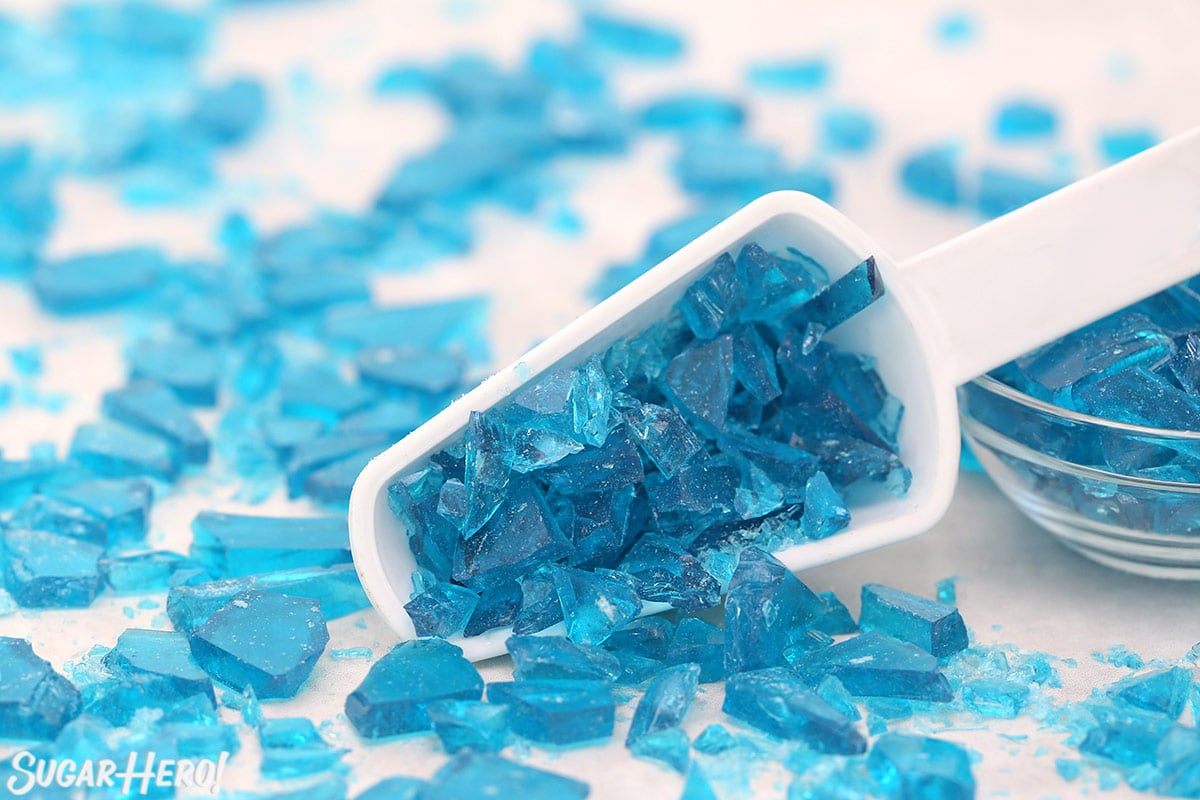
💡 Tips
Safely working with hot sugar
Hot sugar can be extremely dangerous — the temperature gets very high (290° F in this recipe!) and because it is a thick and sticky substance, if you accidentally get some on your skin, it doesn’t rinse off quickly, which can lead to serious burns.
Because of this, this is not a good recipe to make with smaller children. It’s also a good idea to have a bowl of ice water handy while the sugar syrup is cooking, so if you’re accidentally burned, you can immediately dunk your hand and stop further burning. And as always, be alert, deliberate, and careful with your movements in the kitchen.
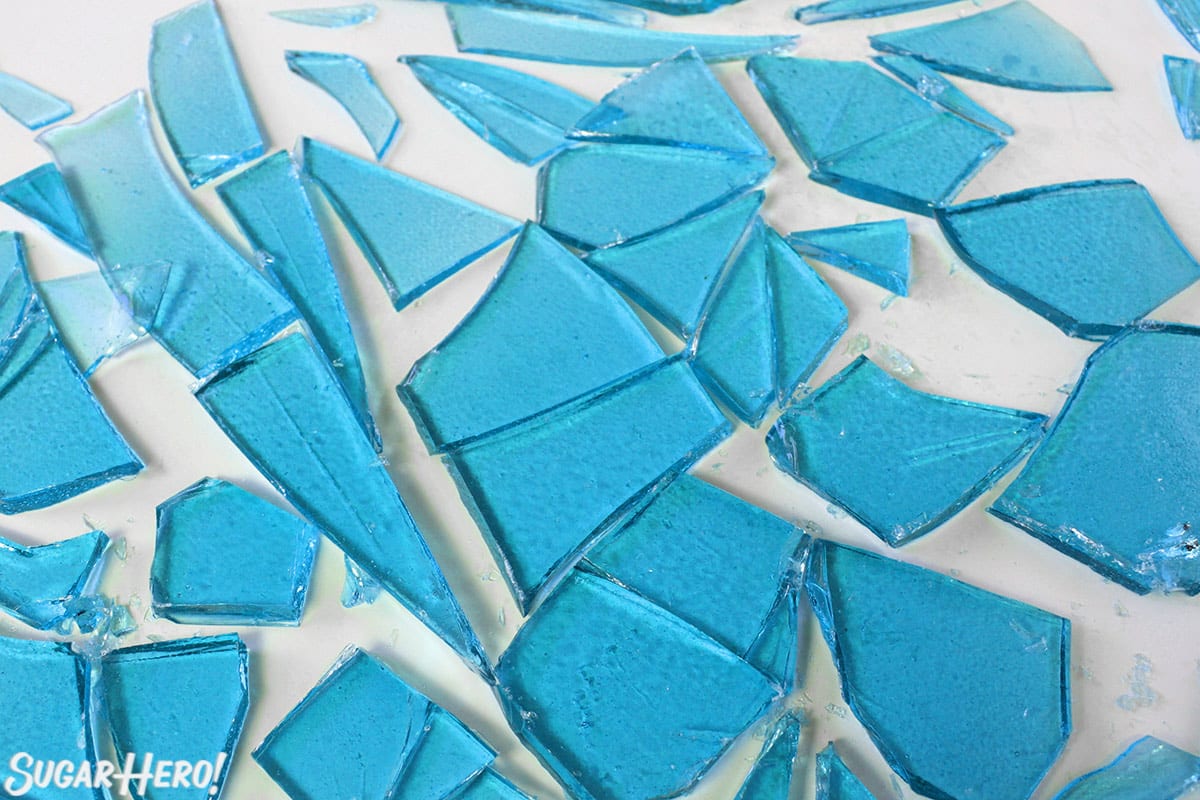
Testing your candy thermometer
It’s important to regularly test your candy thermometer for accuracy. Testing is especially important if you live at a higher altitude, but even at sea level, thermometers can become inaccurate over time. Having an accurate thermometer is essential to successful candy-making.
To test your thermometer, bring a pot of water to a boil, insert the candy thermometer for a minute, and then take a reading. At sea level, water boils at 212° F. If your thermometer doesn’t show 212°, calculate what the difference is. For example, if your thermometer reads 208° in boiling water, you know that you have a difference of -4 degrees in your thermometer. Going forward, you should subtract 4 degrees from any temperature written so that yours is accurate. In this example, if something needs to be cooked to 300° F, you only need to cook it to 296° F on your thermometer to get the right result.
The secret to easy candy removal
This isn’t a necessity like a candy thermometer, but it is a tip that can make your life a little easier! When making hard candy, I like to cover my baking sheets with non-stick foil. Hard candy can be sticky and difficult to remove from regular foil, but non-stick foil is magic, and the candy peels right off!
Other alternatives are to use a silicone baking mat, or spray regular or heavy-duty foil with nonstick cooking spray before beginning.
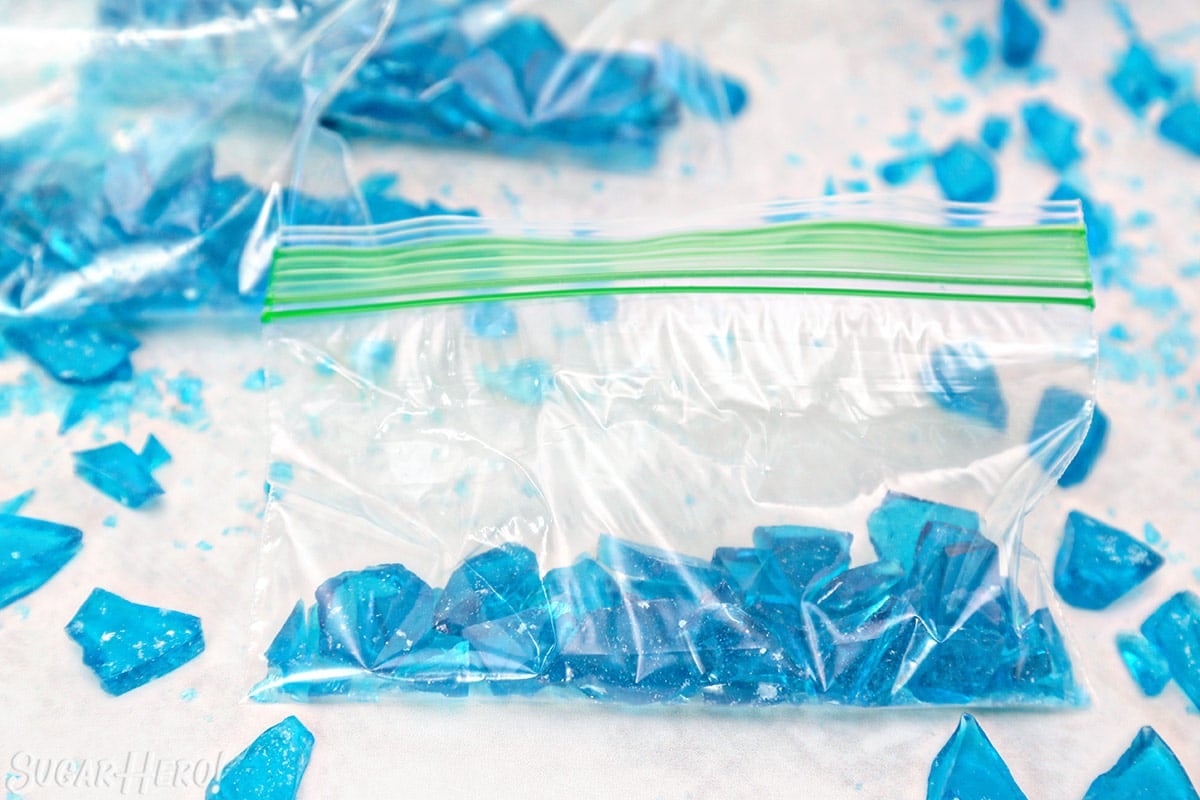
💡 Troubleshooting
Here are some common questions/difficulties people have had with this recipe, and my suggestions for how to prevent them.
This is the #1 problem people have with this recipe. There are 2 possible culprits: overcooking the candy, and using the wrong food coloring.
First, overcooking. The sugar syrup, if allowed to cook to a high temperature, will eventually turn yellow, then amber, then brown. This recipe calls for syrup to be cooked to 290 F, which should produce a near-colorless mixture that will not interfere with food coloring. (It will have a slight yellowish tinge.) If your candy is already a yellow or brown color when you’re adding the food coloring, chances are you have overcooked it, and the yellow color of the candy will mix with the blue dye and turn your candy green. The solution is to check to make sure your thermometer is accurate (see the Tips above) and to watch the candy like a hawk when it’s cooking.
Secondly, using the wrong food coloring. I have made this several times with Americolor Sky Blue, and have always had the color turn out well. I can’t guarantee other colors or brands will turn out the same. Liquid coloring, especially, can be weaker and can produce a greenish shade.
Here are a few colorings other readers have recommended: one reader says that the neon blue McCormick’s liquid food coloring produced a great blue color. She also recommends using a packet of Duncan Hines Frosting Creations in Cotton Candy, stirring it in at the very end and omitting any other flavoring and coloring. Another reader had great success with Adeco brand Electric Blue, and recommends using 5 drops for a great blue color.
If the candy is too soft or doesn’t set, it has not been cooked enough. This recipe really, truly should be measured using a candy thermometer, and if you are using one and still having problems with soft candy, test the accuracy of your thermometer, and double-check that you used the correct quantities and temperature the recipe calls for.
If the candy is initially fine but quickly becomes sticky, humidity is probably the problem. Hard candy works best in a dry environment–sugar soaks up moisture from the air around it, and hard candy quickly becomes wet and sticky in the humidity. Don’t attempt this candy on a humid or stormy day. It should always be stored in an airtight container at room temperature, to keep it as dry as possible. You can also buy silica gel packets to store with your candy to absorb moisture and keep it from becoming sticky.
If your candy is crumbly or sandy instead of hard and crunchy, or opaque instead of translucent, then it has crystallized during the cooking process. Nothing is wrong with it, and it will still taste fine, but the appearance and texture may not be what you want.
Crystallization happens when sugar crystals form during the cooking process. This can happen due to stirring too much while it cooks (once it comes to a boil, you should not be stirring it at all), or not wiping down the sides of the pan with a wet brush to remove the crystals, or just accidentally having stray crystals on the candy thermometer, spatula, or pan. The corn syrup in the recipe helps prevent crystals from forming, so if you substitute other ingredients for the corn syrup, you might find that crystallization is more likely.
This candy won’t spoil, but the texture will become softer and stickier over time. For the best results, store your candy in an airtight container at room temperature for several weeks. If you live in a humid climate, consider picking up some food-safe silica gel packets to store with the candy, to absorb moisture from the air and keep your candy fresh.

🍬 More Candies You’ll Love
Now that you’re a candy-making expert, put those skills to good use and try one of our other popular candy recipes!
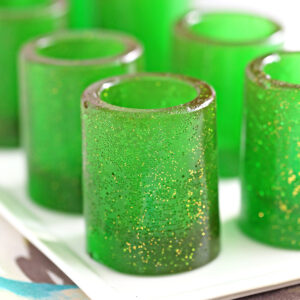
DIY Candy Shot Glasses
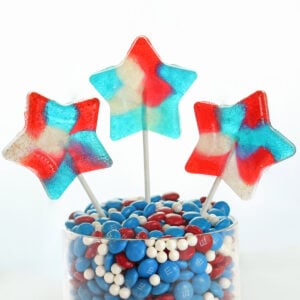
Easy Homemade Lollipops
Leave a Review!
If you make this recipe, let us know! Leave a ⭐️⭐️⭐️⭐️⭐️ rating on the recipe below, and leave a comment, take a photo and tag me on Instagram @elabau, or use #sugarhero on IG!
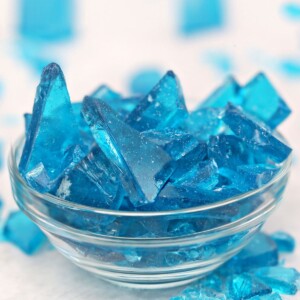
Breaking Bad Blue Rock Candy
Ingredients
- 1/2 cup water, (4 fl oz)
- 8.25 oz light corn syrup, (3/4 cup)
- 14 oz granulated sugar, (2 cups)
- 2 tsp clear flavoring extract
- blue gel food coloring, I used Americolor brand
- Candy thermometer
Instructions
- Line a baking sheet with foil and spray the foil with nonstick cooking spray, or use non-stick foil.
- In a medium saucepan, combine the water, corn syrup, and granulated sugar. Place the pan over medium-high heat, and stir until the sugar dissolves.
- Once it comes to a simmer, brush down the sides with a wet pastry brush to prevent sugar crystals from forming. Insert a candy thermometer.
- Continue to cook the candy without stirring until it reads 290 degrees Fahrenheit (143 C) on the thermometer. Watch the temperature carefully–a lower temperature might produce sticky candy, while a higher temperature runs the risk of producing green candy!
- Once at 290, take the pan off the heat and let it sit for a few moments, until rapid bubbles stop breaking on the surface. Add the flavoring and a drop or two of food coloring, and stir everything together.
- Pour the candy onto the prepared baking sheet and spread it into a thin layer. Let it set completely at room temperature.
- Once set, break it into small pieces. For the complete Breaking Bad experience, place the pieces in a large zip-top bag and smash them with a rolling pin until they are crushed, and place in small baggies to serve.
- Store the candy in an airtight container at room temperature.
Video
Measuring Tips
Our recipes are developed using weight measurements, and we highly recommend using a kitchen scale for baking whenever possible. However, if you prefer to use cups, volume measurements are provided as well. PLEASE NOTE: the adage “8 oz = 1 cup” is NOT true when speaking about weight, so don’t be concerned if the measurements don’t fit this formula.
Want to learn more about baking measurements and conversion?
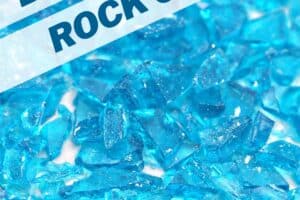
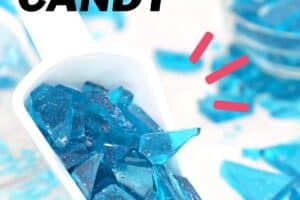
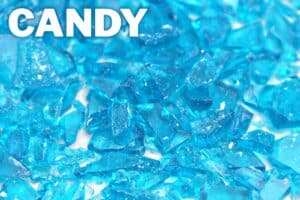
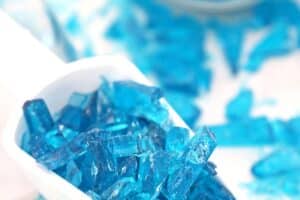
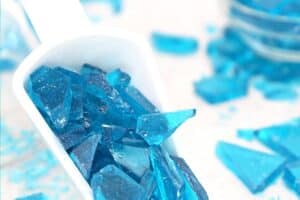
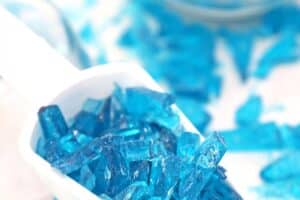
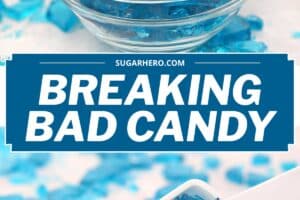
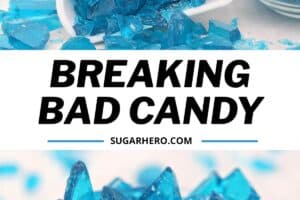
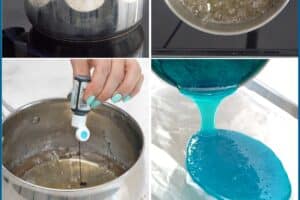
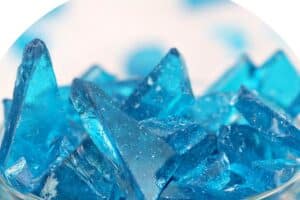
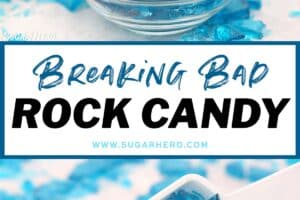
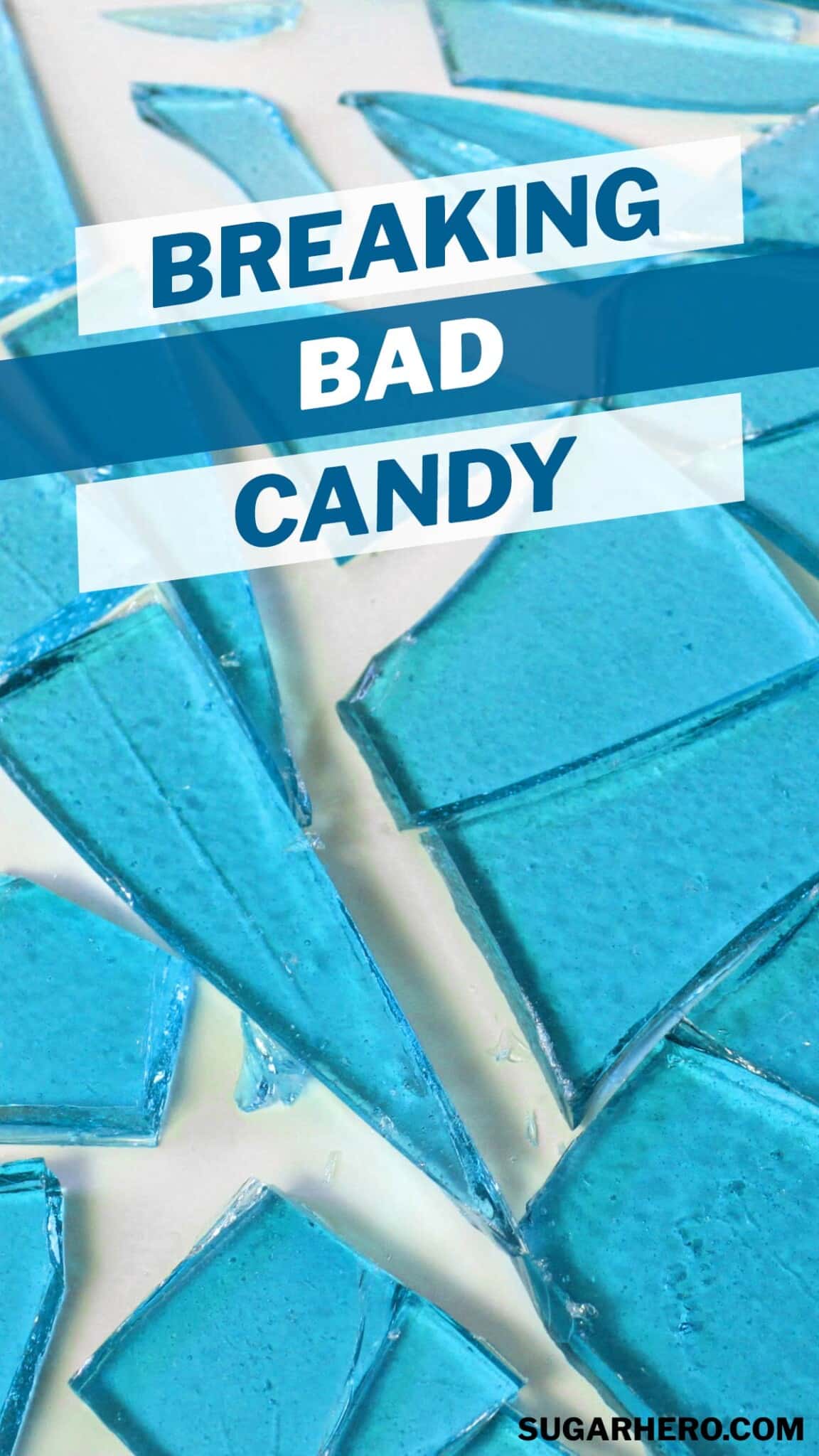
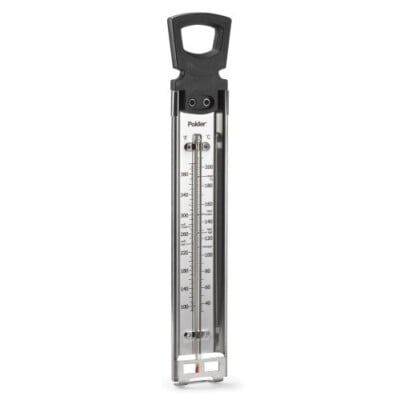
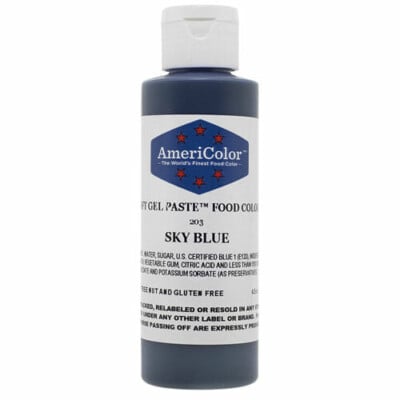
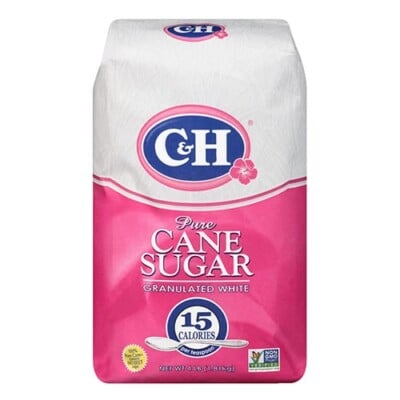
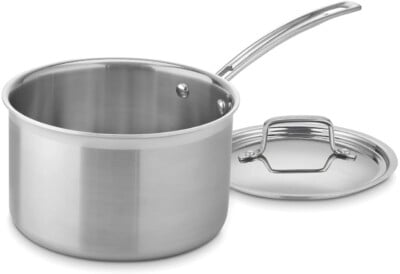
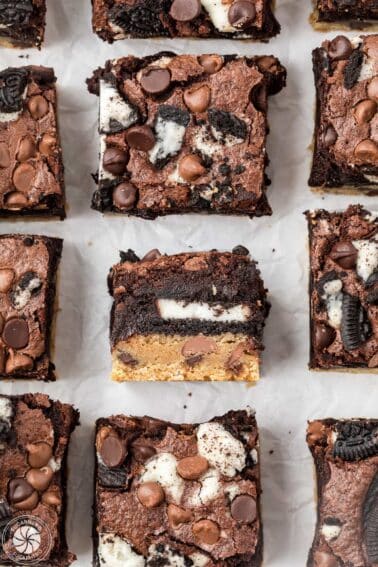
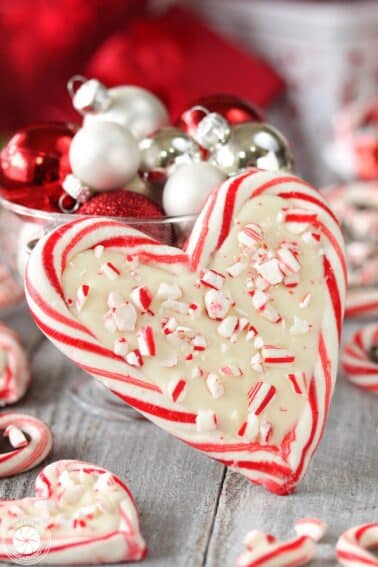
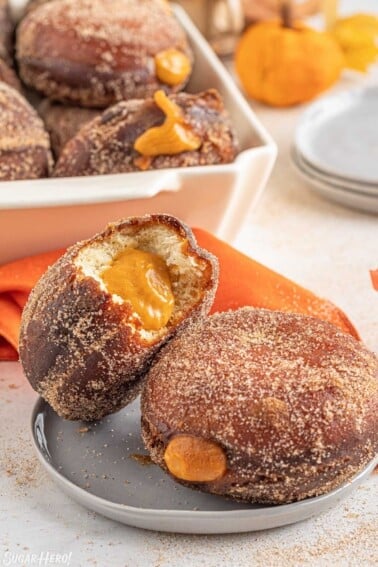
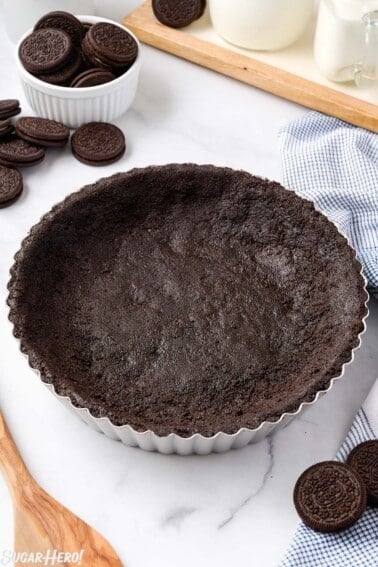












Hi there, I found this page via imgur lol. My fiance is a fan of Breaking Bad and I was hoping to add this to a bunch of themed gifts for xmas.
However, I live in Canada and I’m not sure I’d be able to get some of the same ingredients (ie food colouring etc) Do you have any suggestions for the canucks like me out there?
Hi Katherine, Fun gift idea! I think you’ll be okay with regular food coloring you find in stores. I’ve heard from multiple readers who’ve tried it and used the typical liquid food coloring you can find in many supermarkets. I recommend the specific Americolor shade because I *know* it will work, but from the experiences of others, I think you’ll be fine as long as you don’t overcook the candy and let it take on a caramel color. Were there other ingredients you won’t be able to find? If corn syrup is a problem, you can use glucose as a good substitute if that’s available to you, or make your own corn syrup from sugar, using a recipe like this one:
http://www.thekitchn.com/pantry-staples-diy-cane-sugar-131934
Please let me know if you have more questions. Good luck!
I think you may want to reconsider the name–I was offended that you chose the name Crystal Meth Rock Candy–very ill-chosen name. I would suggest you find a different name than “Crystal Meth,” really bad connotation.
Carol, Did you read the post? Are you familiar with the television show Breaking Bad? I think perhaps you’ve missed the point. This is a recipe for fans of a television show–an in-joke of sorts, for entertainment purposes only. I’m sorry if it offended you, and I understand that it’s not everyone’s cup of tea, but I’ll be keeping the name unchanged.
Thanks for the recipe, seeing as we can’t take the easy way out and buy blue raspberry rock candy in England!
I’ve just cooked my first batch of product – the colour is spot on (Dr Oetker blue food colouring, available in UK supermarkets) but Heisenberg would not be impressed with my “meth” being opaque. It set well and cracked nicely, btw.
I didn’t use corn syrup (not sure if that’s available here), just adjusted the amount of sugar instead. Pretty please could you suggest what I could try to stop my next batch being opaque?
I absolutely love Breaking Bad – I even went to Albuquerque in summer 2011 during a roadtrip! I had a chicken burrito at Twisters (a.k.a. Los Pollos Hermanos), pilgrimaged to the REAL White House and savoured the atmosphere in the parking lot at the Crossroads Motel. I’ll be back in ABQ next summer too.
Thanks again…
Hi fellow Liz! So fun to meet a fellow BB enthusiast–the road trip sounds amazing!
If your candy is opaque, my guess is that it crystallized. Did it break cleanly and have a smooth, shiny surface, or was it a bit more crumbly and rough or coarse? One of the main jobs of corn syrup is to prevent sugar crystals from forming. Sugar crystallizes suuuuper easily, so it’s necessary to have some sort of ingredient that stops this process. If you don’t have corn syrup, you can try adding an acid, like lemon juice, to the sugar mixture. One teaspoon should probably do the trick, and the small amount means you likely won’t taste it in the final product. Cream of tartar is another acid that works well for preventing crystals.
Hope this helps–let me know how it goes! And please do send a picture of the final product.
Thanks for the tip! It was slightly coarse, although I wouldn’t say it was crumbly. I’m just going to do small batches until I perfect my technique. I’ll try to send a photo of my first batch after sending this.
We can buy glucose syrup here, but a lemon would be cheaper! I’ll add it to my shopping list as I’ll try cooking another batch later in the week to (hopefully) get the blue glass effect. I need to increase the purity of my product for my methcakes. 😉
All this sounds a tad dodgy, so a little message to the DEA & Hank – “Please don’t kick down my door in a dawn raid, it’s only sugar!”
Thanks again…
I think this name is very offensive and inappropriate, even if it is a reference to a tv show.
Do you serve this to children using this name??
Only when they get a mad case of the munchies!
As this recipe/post is directed to Breaking Bad fans, an ADULT show, I doubt anyone would feel the need to give this to kids and call it crystal meth. It would simply be ‘blue candy’. I think that should be fairly obvious.
Personally, I’m a massive fan of the show and I cant wait to give this recipe a try!
tried it last night (17th), perfect! can I use parchment paper next time? i feel as if you don’t need the pam. and if you know how to make the “meth” as pop rocks that’d be so awesome.
Hi Laura,
So glad it worked! I wouldn’t recommend parchment. It might work (haven’t tried it with this exact recipe) but I’ve had bad experiences with other hard candy recipes where the parchment sticks and has to be peeled off and leaves a papery residue. You probably could forgo the spray on the foil and be fine. If you’re looking to eliminate the foil, a Silpat liner works, or lightly grease a baking sheet or marble slab and you should be able to pop it off once it hardens. I just think the foil is least messy/most convenient…to each their own, though!
I don’t have any good ideas about the pop rocks…but that sounds awesome.
Hello, thanks so much for the recipe yo! My first couple batches have turned out great.
I have been cooking to 285 as directed and have had good clear crunchy product. However I noticed many rock candy recipes calling for a 300 degree boil to reach “hard crack”. I think I will try to boil to 300 next time and see what happens.
I like to take out a shard, and crack it into pieces on a glass surface with a bic lighter before consuming. I think its easier on the teeth in smaller pieces, and I feel like Tuco doing it 🙂
Thanks again!
Skinny Pete, you are cracking me up! I don’t know that emulating Tuco is really the best way to go about life, but to each his own.
300F is definitely the traditional temperature for hard candies. That was actually how I originally wrote the recipe, but I found that people were consistently overcooking the candy and as the candy went above 300, it started to darken and turn a greenish color. To help prevent that, I took the temperature a little lower to give people more “wiggle room” so that even if they overcooked their candy, they would still get a blue color instead of a green color. Definitely give it a try and see what you think! You may notice the color changes a little, and the candy will probably be a bit less sticky, but otherwise the taste should be almost identical.
Hi Elizabeth!
Thanks for such a great recipe. I love this blog, and I keep coming back especially to this page again and again. I’ve now made this for the third time and I just follow all your instructions and it never fails. Most recently, I made the candy to line the side of a Breaking Bad themed cake! It was a really great extra touch, so thank you
First, thank you for writing and revising this as you’ve gone–I’d been eyeing this for a long time but finally got up the nerve (and ingredients) to try it last night. My first batch turned out green–I know it isn’t the coloring since I was able to get the one you recommend, so it must be overcooked.
I have a digital candy thermometer, so I tried doing the calibration tonight. The thermometer read 212 when the water was boiling. But I did notice that when the water was first starting to do a rolling boil it was about 207 or 208. Do you think it might be that might thermometer is a bit slow or I’m cooking at too high a heat? I took last night’s batch off the heat the moment it reached 285 but didn’t think to see what the temp ended at.
Also, not sure if related, but should the final texture be completely rigid? The set gel did shatter nicely, but the moment you put a piece in your mouth it was sticky like a dense caramel. Maybe related–too much water still in there from cooking too fast?
Thanks again. Right now I feel like I’m at Captain Cook and would like to get to Heisenberg by premiere.
Hi Ryan! The texture of the finished candy shouldn’t be sticky or caramel-like–it should be crunchy and hard, like a lollipop. So yes, it might be that it was cooked at too high a temp and the sugars caramelized before enough water was evaporated–what stove setting were you cooking it on? Are you at sea level, or a higher altitude? And is it humid or stormy where you are right now? Humidity can be a big culprit in turning sugar candies sticky and making hard candy making troublesome.
Thanks for replying. I’m close to sea level but in Austin, TX. Not as humid as Houston, but may very well be an issue. I did try a second batch cooking at a lower temp (first batch I had temp gauge at a bit over 8, this time I tried 6). That definitely took longer but I noticed the temperature topping out so I had to increase the heat a couple of times. The result was definitely more rigid so I think that worked to get more water out.
It was still green, but I realized the culprit–I was only able to find one store with light corn syrup but it was an organic light corn syrup and totally yellow. I didn’t know that corn syrup should be clear until I did some searching. Like I said, totally Captain Cook.
Thanks again, will keep working on it.
Yellow corn syrup sounds like the culprit for sure! I don’t think I’ve ever seen yellow corn syrup (or organic corn syrup at all…) so it didn’t occur to me, but I’ll be that’s it. And who knows, it might also contribute to your texture problem. Get yourself some highly processed, non-organic corn syrup and try again! None of that fancy healthy stuff here.
That was it. Switched to Karo for third batch–sky blue! The culprit was Wholesome Sweeteners Organic Light Corn Syrup. Silly healthy corn syrup!!
Yesss success! Walt would be proud! So glad it worked, and glad to know what the culprit was in case others have the same trouble later on.